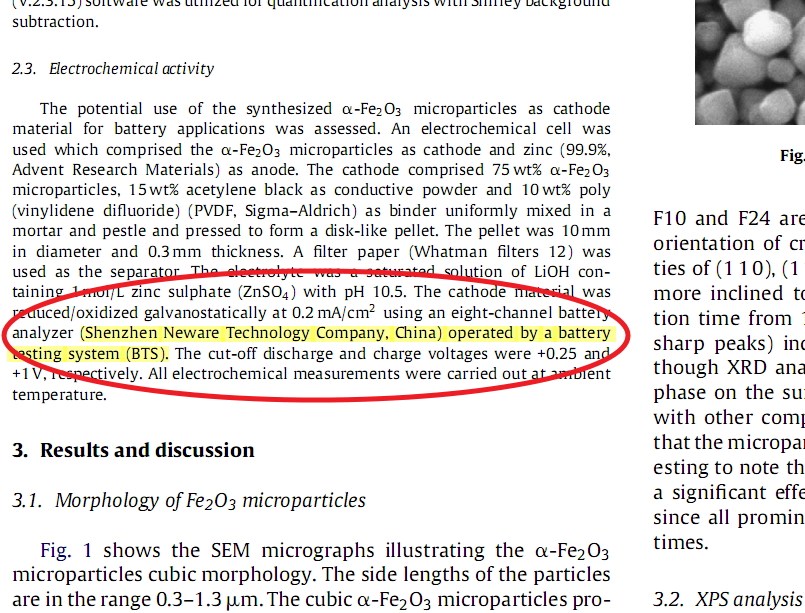This paper ‘Hydrothermal synthesis of cubic α-Fe2O3 microparticles using glycine: Surface characterization, reaction mechanism and electrochemical activity’ is published on Journal of Alloys and Compounds Volume 509, Issue 41, 13 October 2011, Pages 9821–9825.
Cubic α-Fe2O3 (hematite) microparticles (side lengths = 0.3–1.3 μm) have been synthesized using glycine and ferric chloride via a simple one-step hydrothermal reaction. Their morphological, mineralogical and surface properties have been determined using scanning electron microscopy (SEM), atomic force microscopy (AFM), X-ray diffractometry (XRD) and X-ray photoelectron spectroscopy (XPS). XRD analysis indicated that the synthesized α-Fe2O3 microparticles were minerallogically pure. An increase in hydrothermal reaction duration from 10 to 24 h increased the atomic percentages of α-Fe2O3 on the surface of the microparticles by almost 8%. The mechanism concerning reactions of species to produce this microparticles precipitate was elucidated based on thermodynamics and ionic equilibrium aspects. In the electrochemical analysis, the synthesized α-Fe2O3 microparticles (as cathode material) exhibit an approximate charge capacity of 160 mAh/g and excellent coulombic efficiency of 94%.
In this article, the author used battery test equipment from Neware.

Click to see the whole article: http://www.sciencedirect.com/science/article/pii/S0925838811016860
Comments are closed.









